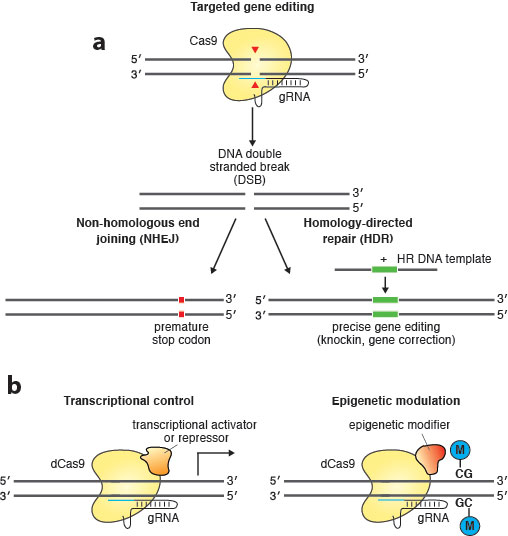Utilizing a protein and a RNA that guides it to a specific DNA sequence, the CRISPR-Cas system, which originates from the bacterial adaptive immune system, is revolutionizing biology by providing a tool with enormous applicability including precise gene disruption, epigenetic and transcriptional control and DNA labeling. Guide RNAs can be generated quickly and can be used simultaneously to edit and control multiple genes. In addition, the system can be applied to virtually any cell type and animal species. This opens the door to the development of new model systems for studying the nervous system and its disorders. The review “Applications of CRISPR-Cas systems in neuroscience” provides an overview of existing genome-editing technologies and highlights the power of the CRISPR-Cas system to study synaptic plasticity and circuit function, neurodevelopment and neuropsychiatric disorders. It particularly focuses on recent advances and open challenges of genome editing in the mammalian brain and human-derived stem cells, and outlines how this approach may benefit the development of new therapeutic strategies.

Figure: Genome editing applications of CRISPR-Cas. (a) Targeted gene editing of the nuclease Cas9 guided by sgRNA. (b) Cas9 with inactivated nuclease activity (dead Cas9, dCas9) fused to functional domains for transcriptional control and epigenetic modifications.
The CRISPR-Cas toolbox is expanding rapidly, opening new avenues for studying the complexity of the nervous system and the molecular mechanisms underlying higher cognitive function and mental disorders. It’s an exciting time for young scientists and taking full advantage of this technology will help us to unravel some of the mysteries of the human brain and spur the development of new molecular therapeutics.
Reference
Applications of CRISPR-Cas systems in neuroscience. Heidenreich M, Zhang F. Nat Rev Neurosci. 2016 Jan;17(1):36-44. doi: 10.1038/nrn.2015.2. Epub 2015 Dec 10.


































